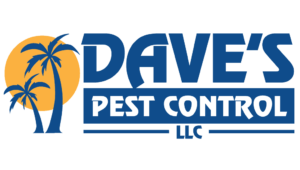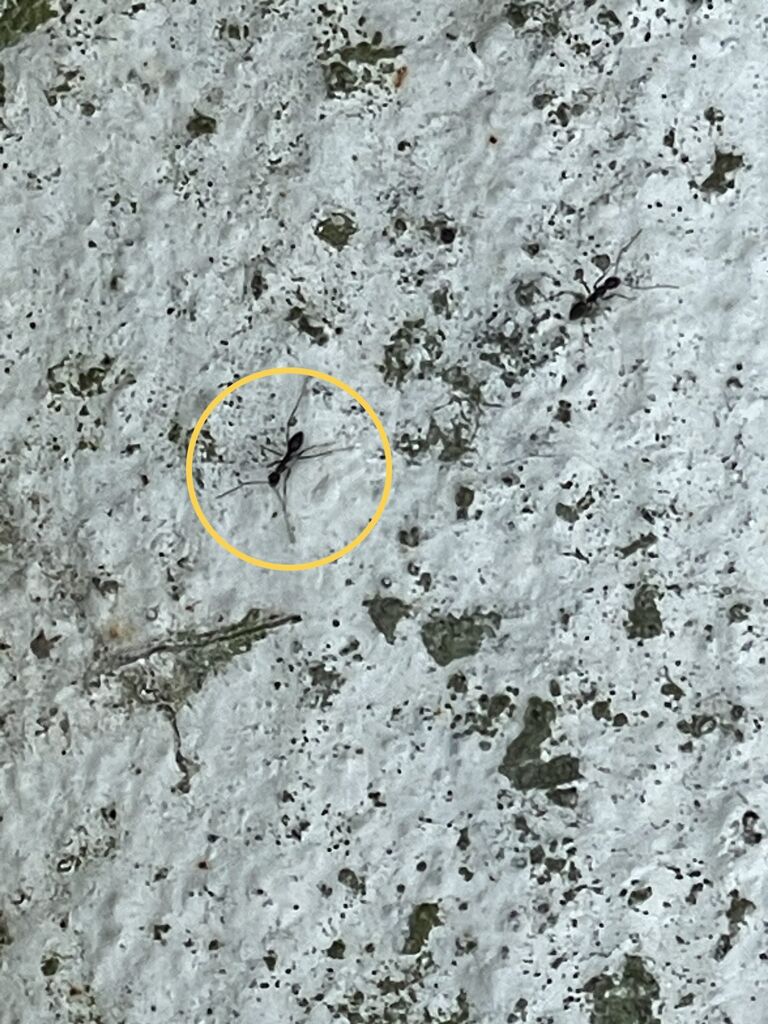
Ants 101
The Invasion of Crazy Ants in Florida: Ecological Impact and Management Challenges
In recent years, Florida has witnessed the relentless invasion of tawny crazy ants (Nylanderia fulva), a formidable and ecologically disruptive species. Originally from South America, these invasive ants have established themselves in various parts of the state and other southern regions of the United States.
We find crazy ants everywhere in Florida including, Volusia, Seminole, Lake, Orange and Flagler counties.
This essay delves into the characteristics of tawny crazy ants, their ecological impact on Florida’s ecosystems, and the challenges faced in managing their proliferation.
Characteristics of Tawny Crazy Ants
Tawny crazy ants, also known as rasberry crazy ants or hairy crazy ants, are small ants measuring approximately 1/8 inch in length. Their reddish-brown coloration distinguishes them, and their erratic, rapid movements earn them the fitting moniker “crazy ants.” Unlike other ant species, which follow pheromone trails in an organized manner, these ants display chaotic movements that make them challenging to predict or control. Additionally, they possess specialized hairs, called trichomes, that give them a “velvety” appearance and likely aid in water repellency.
Ecological Impact
The invasion of tawny crazy ants poses several ecological threats to Florida’s delicate ecosystems. Their adaptability and ability to establish large colonies enable them to outcompete native ant species for resources, leading to disruptions in the natural balance. The dense and massive colonies of these ants can decimate populations of insects, small invertebrates, and even impact certain vertebrates.
One of the most concerning aspects of their invasion is their attraction to electrical equipment. Tawny crazy ants infest electrical boxes, transformers, and other devices, leading to short circuits, malfunctions, and damages. As a result, electrical engineers and maintenance workers face enormous challenges in managing and repairing electrical systems infested with these ants.
Furthermore, these ants have shown a preference for plant nectar and honeydew-producing insects. By interacting with plants and insects, they can interfere with pollination processes and disrupt mutualistic relationships, affecting the broader ecosystem’s biodiversity.

Challenges in Management
Managing the invasion of tawny crazy ants presents a host of difficulties. Traditional ant control methods that work against other species often prove less effective with these invasive ants. Chemical treatments may not yield desired results due to their erratic movement patterns, which can prevent them from taking the bait or coming into contact with insecticides.
Additionally, the vast and dense colonies of tawny crazy ants make eradication challenging. Localized treatments might prove insufficient to halt their proliferation entirely, necessitating broader-scale strategies and continuous efforts.
Furthermore, the rapid expansion of tawny crazy ant colonies in urban areas, agricultural lands, and natural ecosystems poses a significant financial burden and safety risk. Electrical damage, agricultural losses, and ecological disruptions can result in substantial economic losses and adverse consequences for human well-being.
Conclusion
The invasion of tawny crazy ants in Florida represents a grave ecological concern. Their adaptability, aggressive foraging behavior, and attraction to electrical equipment make them a formidable force in disrupting ecosystems and human infrastructures alike. As the state continues to face the challenge of managing their proliferation, collaborative efforts among researchers, pest control professionals, and the public are essential.
To mitigate their impact, ongoing research is crucial to developing effective management strategies tailored to the unique characteristics of these ants. Raising public awareness about the threat posed by invasive species like tawny crazy ants can foster a sense of responsibility among residents and industries in reporting and addressing infestations. By working together, Floridians can protect their state’s delicate ecosystems and ensure a sustainable future for both human and non-human inhabitants.
Ghost Ants in Florida: Tiny Terrors Invading Our Kitchens
Florida, a state known for its diverse wildlife and natural beauty, faces a growing menace in the form of ghost ants (Tapinoma melanocephalum). These tiny insects, native to the Caribbean region, have made their way into the Sunshine State, infesting homes and causing headaches for residents, particularly in kitchens. This essay explores the characteristics of ghost ants, their tendency to infest kitchens, and the challenges they pose to homeowners and pest control efforts.
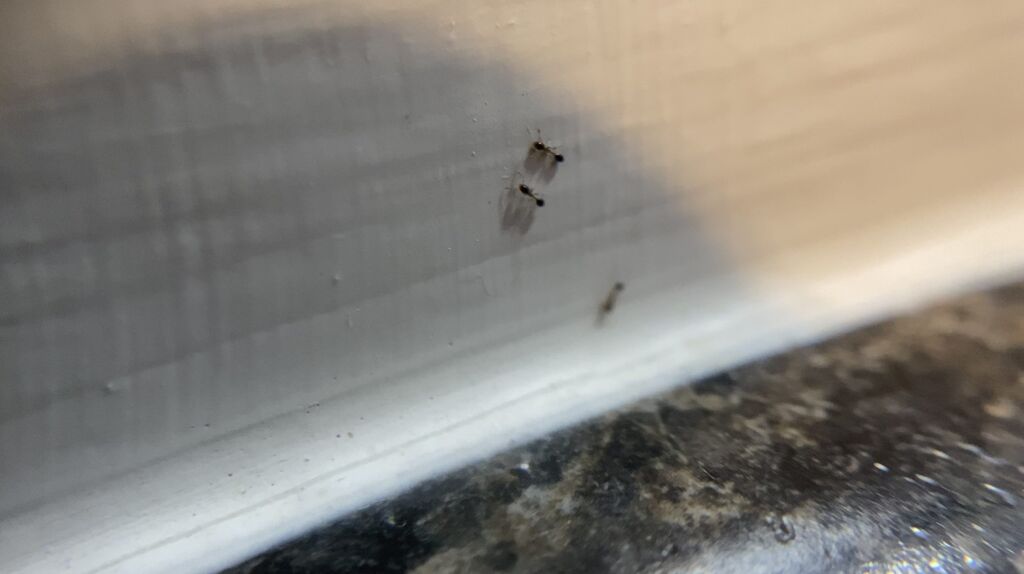
Characteristics of Ghost Ants
Ghost ants are aptly named due to their appearance. Measuring only about 1.3 to 1.5 millimeters in length, these pale-colored ants have transparent abdomens and legs, making them almost invisible on light-colored surfaces. The workers and queen ants differ significantly in size, with the queen being slightly larger.
These ants prefer warm, tropical climates and thrive in humid environments, making Florida’s climate ideal for their survival and proliferation. They are known for their prolific reproduction, with queen ants laying several eggs each day.
Tendency to Infest Kitchens
Ghost ants are opportunistic foragers and are often drawn to kitchens due to the abundance of food and water sources. Their small size allows them to enter homes through tiny cracks and crevices, making it challenging to keep them out.
In kitchens, ghost ants are attracted to a wide range of food items, including sugary substances, crumbs, fruits, and even pet food. They can infest pantries, cabinets, countertops, and garbage areas, quickly becoming a nuisance to homeowners. Their keen ability to find food sources and form trails allows them to establish extensive colonies within kitchens in a short period.
Challenges Posed by Ghost Ants
The invasion of ghost ants in kitchens poses several challenges and frustrations for homeowners:
Food Contamination: Ghost ants can contaminate food items, rendering them unsafe for consumption. Their presence can lead to financial losses as homeowners need to dispose of infested food.
Difficulty in Eradication: Due to their small size and ability to hide in cracks and crevices, ghost ants can be challenging to eliminate completely. Ineffective DIY pest control methods may result in temporary relief but fail to address the root of the infestation.
Chemical Resistance: Some ghost ant colonies have shown resistance to certain types of insecticides, making eradication efforts even more difficult.
Stress and Anxiety: The presence of ants in the kitchen can cause stress and anxiety for homeowners, as they feel their personal space invaded and the comfort of their home compromised.
Impact on Food Businesses: For restaurants and food-related businesses, ghost ant infestations can lead to health code violations and reputational damage, potentially impacting their livelihood.
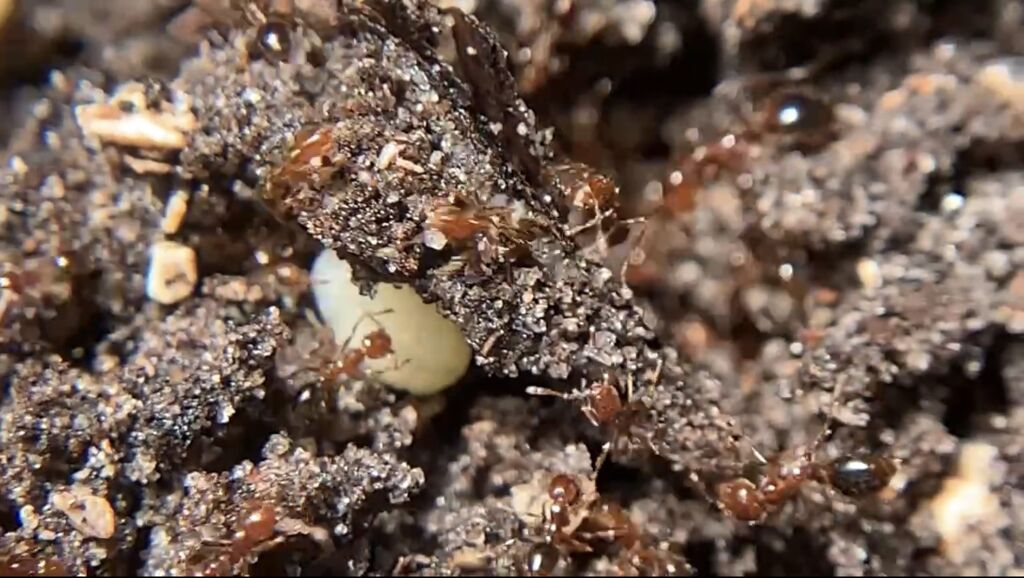
Management and Prevention
Effective management and prevention strategies are essential to controlling ghost ant infestations in kitchens:
Sanitation: Maintaining a clean and tidy kitchen is crucial in reducing food sources that attract ghost ants. Regularly clean countertops, sweep floors, and promptly clean up spills and crumbs.
Seal Entry Points: Seal cracks and crevices around doors, windows, and walls to prevent ghost ants from gaining access to the kitchen.
Professional Pest Control: For severe infestations, seeking the help of a licensed pest control professional, like Dave’s Pest Control, is recommended. We can identify the extent of the infestation and implement targeted treatments.
Baits: Ant baits can be effective in eliminating ghost ant colonies, as the workers carry the bait back to the nest, ultimately affecting the queen.
Ghost ants are tiny terrors that have invaded Florida, with a particular affinity for infesting kitchens due to the abundance of food and water sources. Their small size and prolific reproduction make them difficult to eradicate completely, posing challenges to homeowners and businesses alike. Effective management strategies, regular sanitation, and professional pest control are essential in preventing and controlling ghost ant infestations in Florida’s kitchens. By taking proactive measures, Floridians can protect their homes, businesses, and food supplies from these persistent pests.
Fire Ants in Florida
Florida, a state renowned for its lush landscapes and warm climate, is, unfortunately, home to one of its most formidable invasive species: the fire ant (Solenopsis invicta). These aggressive ants have established themselves in countless yards across the state, causing significant concern for homeowners and posing a threat to both human and animal safety. This essay delves into the characteristics of fire ants, their impact on Florida yards, and the challenges faced in managing their presence.
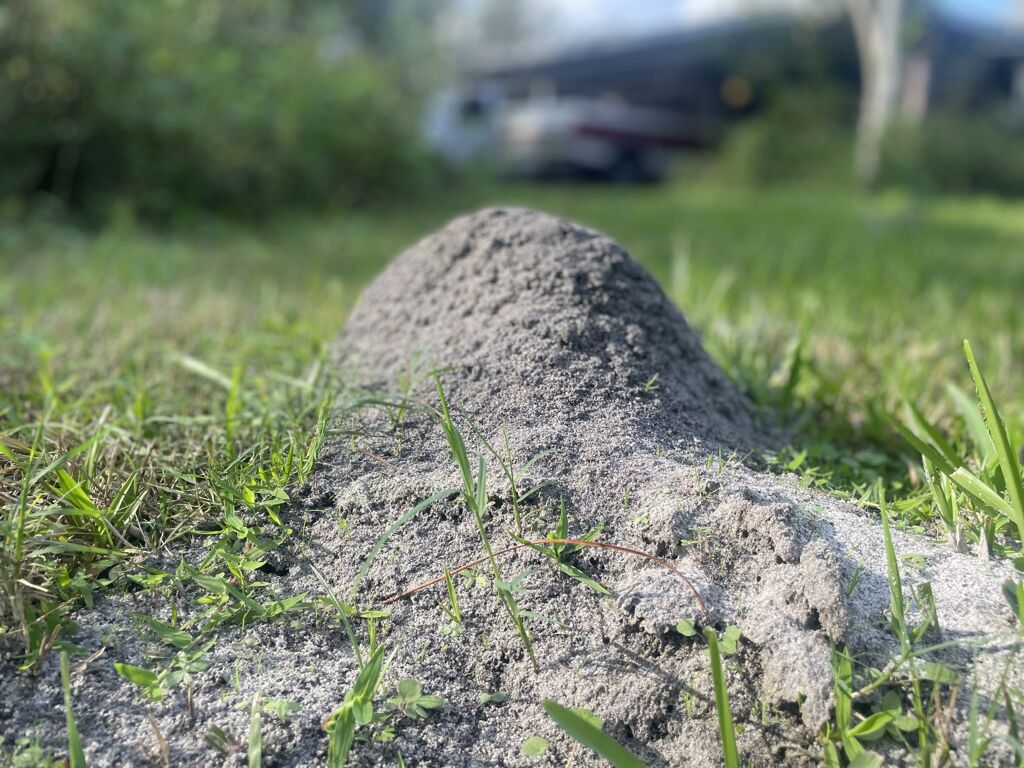
Characteristics of Fire Ants
Fire ants are small reddish-brown ants, with workers measuring between 1/8 to 1/4 inch in length. They build large colonies that consist of intricate networks of underground tunnels and mounds on the surface. Fire ant colonies are highly organized, with specialized castes, including workers, soldiers, and a reproductive queen.
The name “fire ant” stems from their aggressive nature and painful sting. When disturbed, fire ants will swarm their attacker and deliver painful, burning stings using their venomous stingers. These stings can cause painful welts, itching, and allergic reactions in some individuals, making them a serious health concern.
Impact on Florida Yards
Fire ants have a significant impact on Florida yards, affecting both humans and local ecosystems:
Human Safety: Fire ant stings can be extremely painful and, in some cases, life-threatening, particularly to individuals allergic to their venom. Their presence in yards increases the risk of accidental encounters and stings for homeowners and their pets.
Agricultural Damage: Fire ants are voracious feeders, attacking and damaging crops, fruits, and even small animals. Their presence in yards can hinder gardening efforts and disrupt local agricultural practices.
Ecological Disruption: As an invasive species, fire ants can outcompete native ant species, leading to disruptions in the local ecosystem. They also prey on other insects and small invertebrates, potentially impacting natural food chains.
Aesthetic Concerns: Fire ant mounds can spoil the appearance of well-maintained yards and landscapes. Their presence can make outdoor activities uncomfortable and challenging.

Challenges in Management
Managing fire ants in Florida yards presents numerous challenges:
Rapid Reproduction: Fire ant queens can lay hundreds of eggs each day, leading to rapid colony growth and infestations that quickly get out of control.
Resistance to Control Methods: Some fire ant populations have developed resistance to certain chemical insecticides, making traditional control methods less effective.
Extensive Colonies: Fire ant colonies can extend deep into the ground, making it difficult to reach the queen and eradicate the entire colony.
Recurring Infestations: Even after successful treatments, fire ants can return due to neighboring colonies or new queens establishing colonies nearby.
Management Strategies
Despite the challenges, effective management strategies can help homeowners control fire ants in their yards:
Bait Treatments: Use ant baits containing slow-acting insecticides that workers bring back to the colony, targeting the queen and reducing the entire population.
Broadcast Treatments: Applying granular insecticides to the entire yard can help reduce fire ant populations.
Individual Mound Treatments: For isolated mounds, direct treatments with liquid insecticides can be effective.
Regular Monitoring: Continuously monitor yards for new mounds or signs of ant activity, addressing infestations promptly.
Professional Assistance: Seek help from licensed pest control professionals like Dave’s Pest Control for severe infestations or when traditional methods prove ineffective.
Remember, if you see one more bug, Call Dave’s!
